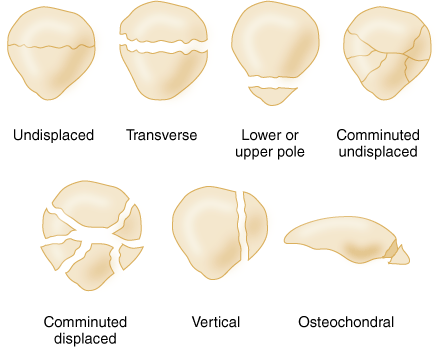The patella is the largest sesamoid bone in the body and is located anterior to the knee joint and within the quadriceps tendon. The patella provides additional leverage to the quadriceps muscle allowing it to produce more power as it straightens the knee.
A fracture of the patella most commonly occurs as a result of direct trauma to the knee. The patella may also fracture from a very significant and often traumatic quadriceps contraction. When the patella is fractured damage to structures supporting the patella such as the retinaculum and quadriceps can also occur. These secondary injuries further prevent the normal extension mechanism of the knee and influence the type of rehabilitation. Radiographic imaging in the form of an X-ray will be able to confirm a fracture of the patella.
Patella fractures can be managed either conservatively or with surgery. Conservative management of a fracture is more likely to occur if there is less than 2mm of displacement of the fracture segments and there is a normal knee extension mechanism. This type of management initially involves an extension splint to prevent excessive force through the patella allowing early healing of the bone. Individuals wearing the knee splint can typically weight-bear soon after the injury.
Surgery is indicated if there is significant displacement (greater than 2mm) of the fracture segments. Surgery is important to reposition and fixate the fracture sites allowing them to unite together as new bone develops. Additional surgical repair of the quadriceps or retinaculum may be performed if these structures have sustained damage.
Patella bone healing is expected to occur over an 8-12 week period. Over this time quadriceps muscle strength and knee range is progressed. To return to previous sporting activities or hobbies ongoing rehabilitation for 4-5 months is often required to regain sufficient strength through the entire lower limb including the knee, hips and lumbo-pelvic region.

